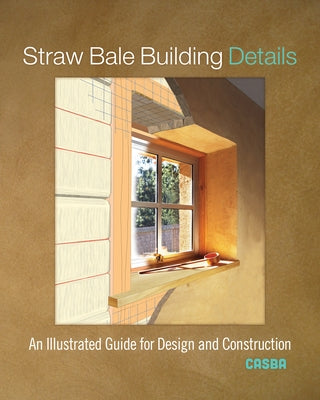Description
The devil is in the details-the science and art of designing and building durable, efficient, straw bale buildings
Straw bale buildings promise superior insulation and flexibility across a range of design aesthetics, while using a typically local and abundant low-embodied energy material that sequesters carbon-an important part of mitigating climate change.
However, some early straw bale designs and construction methods resulted in buildings that failed to meet design goals for energy efficiency and durability. This led to improved building practices and a deeper understanding of the building science underlying this building system.
Distilling two decades of site-built straw bale design and construction experience, Straw Bale Building Details is an illustrated guide that covers:
- Principles and process of straw bale design and building, options, and alternatives
- Building science of straw bale wall systems
- How design impacts cost, building efficiency, and durability
- Avoiding costly mistakes and increasing construction efficiency
- Dozens of time-tested detailed drawings for straw bale wall assemblies, including foundations, windows and doors, and roofs.
Whether you're an architect, engineer, contractor, or owner-builder interested in making informed choices, Straw Bale Building Details is the indispensable guide to current practice in straw bale design and construction.
Author: Casba
Publisher: New Society Publishers
Published: 04/30/2019
Pages: 288
Binding Type: Paperback
Weight: 1.60lbs
Size: 10.90h x 8.40w x 0.80d
ISBN13: 9780865719033
ISBN10: 0865719039
BISAC Categories:
- Architecture | Sustainability & Green Design
- House & Home | Do-It-Yourself | General
- Technology & Engineering | Construction | General
About the Author
California Straw Building Association (CASBA) is a nonprofit dedicated to furthering the practice of straw building by exchanging current information and practical experience, promoting and conducting research and testing, and making that body of knowledge available to working professionals and the public at large. Members include dozens of architects, engineers, and builders who, over two decades, have worked on hundreds of straw bale structures across a variety of architectural styles, climates, and seismic zones. CASBA members' work demonstrates that straw bale construction has a valid place in the future of zero-energy, carbon-sequestering buildings. CASBA is headquartered in Berkeley, California.

